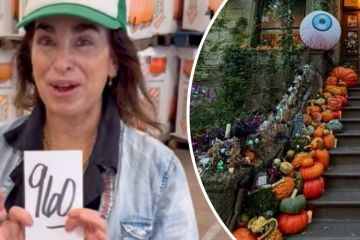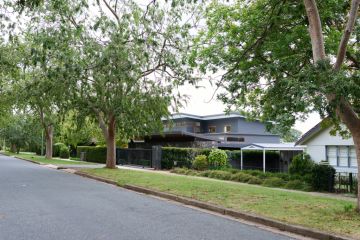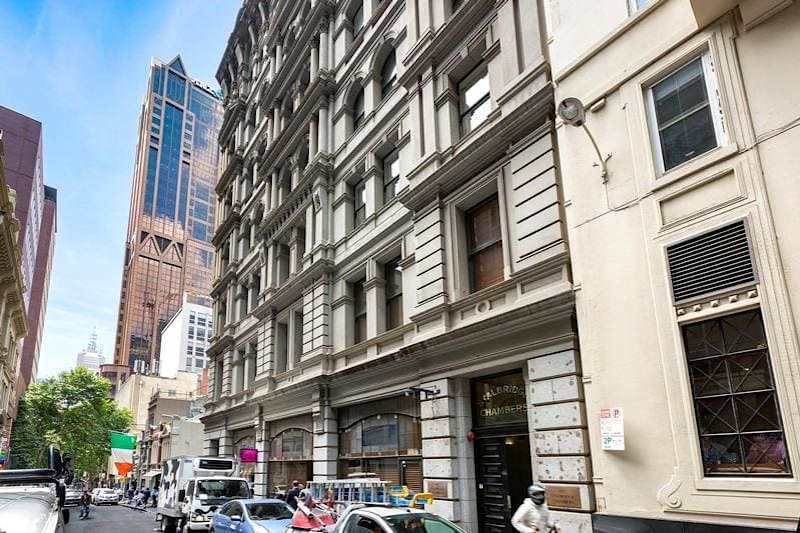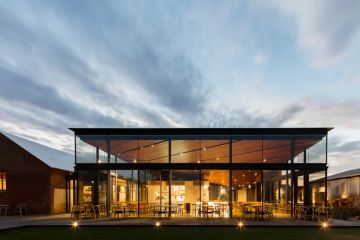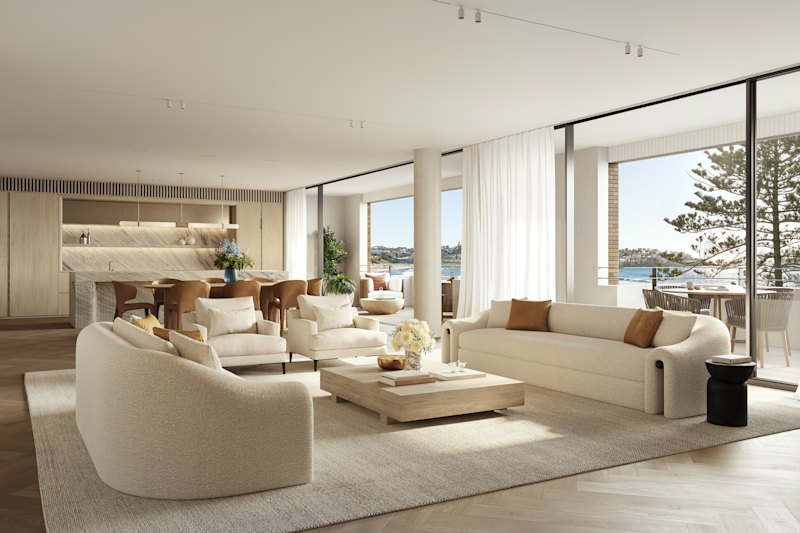NAB's Ann Sherry pins $15m hopes on landmark The Abbey in Annandale
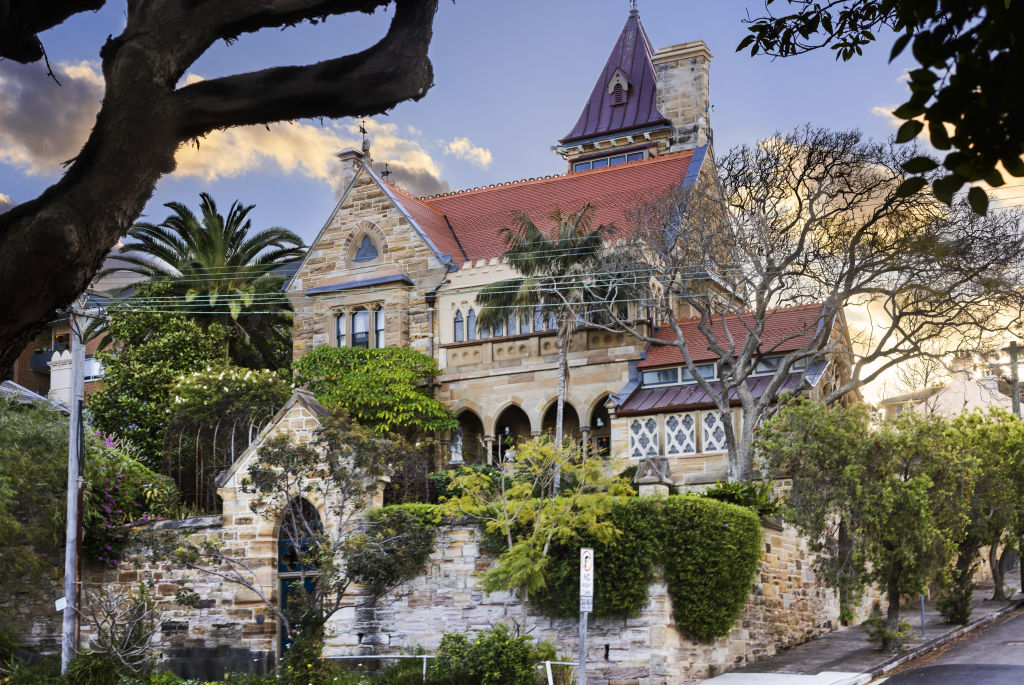
Sydney’s spring selling season finally landed one of the inner west’s plum listings on Tuesday when Annandale’s historic landmark residence The Abbey hit the market given downsizing plans by former Carnival Australia chair Ann Sherry and her husband Michael Hogan.
The landmark 1881-built residence is best known locally as one of four remaining “witches houses” that were built by Sydney Lord Mayor and architect John Young, of which The Abbey was widely regarded as the most impressive, thanks to its distinctive copper-clad tower, intricate stonework and gargoyles.
The couple’s downsizing plans come at a fortuitous time given the booming property market, a dearth of high-end listings across Sydney, and expectations of close to $15 million that would challenge the inner west’s house price record.
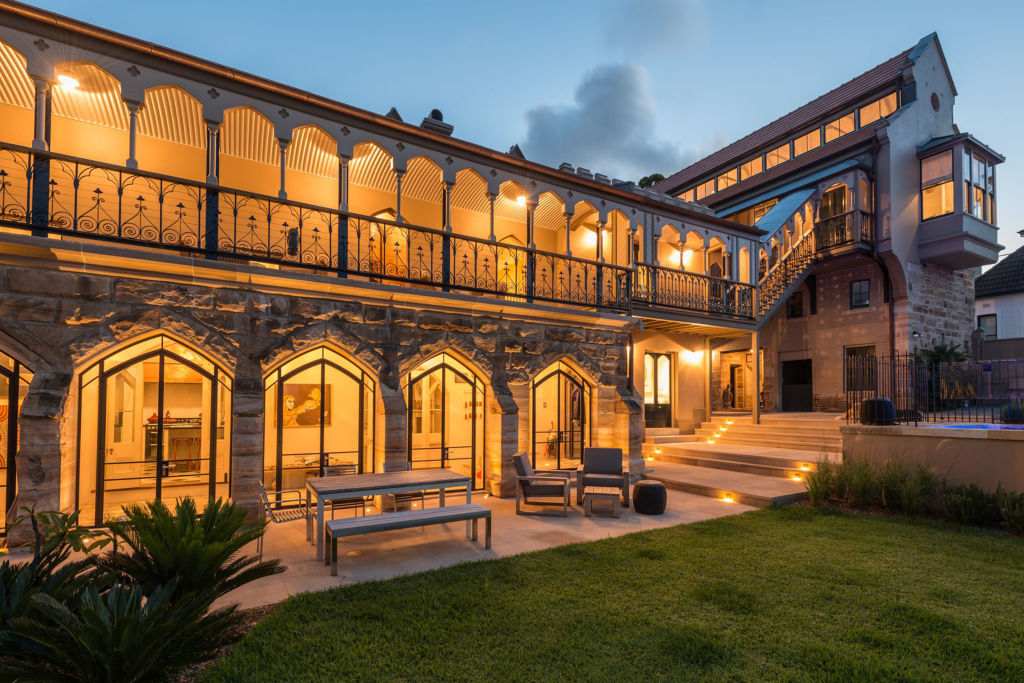
Annandale’s record was set in April at $8.75 million when bookshop owner Jay Lansdown and his wife Fiona bought on nearby Trafalgar Street, having set an inner west high of $15 million when they sold their Balmain East waterfront home to Angus White, the grandson of the late Lady (Nancy) Fairfax and Sir Vincent Fairfax.
Hogan and Sherry, the latter of whom sits on the board of NAB and is chair of Enero Group, have appointed CobdenHayson’s Danny Cobden with an expressions of interest deadline of November 4.
Mr Young, whose commissions included St John’s College at Sydney University and a large portions of St Mary’s Cathedral, never lived in The Abbey, instead residing at Kentville next door, and The Abbey was leased until the 1920s when it was converted into flats.
In 1959, surgeon Geoffrey Davis purchased it for £4500, at which point the mansion’s infamy for ghosts and hidden tunnels took on the legend of wild parties thanks to Dr Davis’s membership in Sydney’s Bohemian movement The Push.
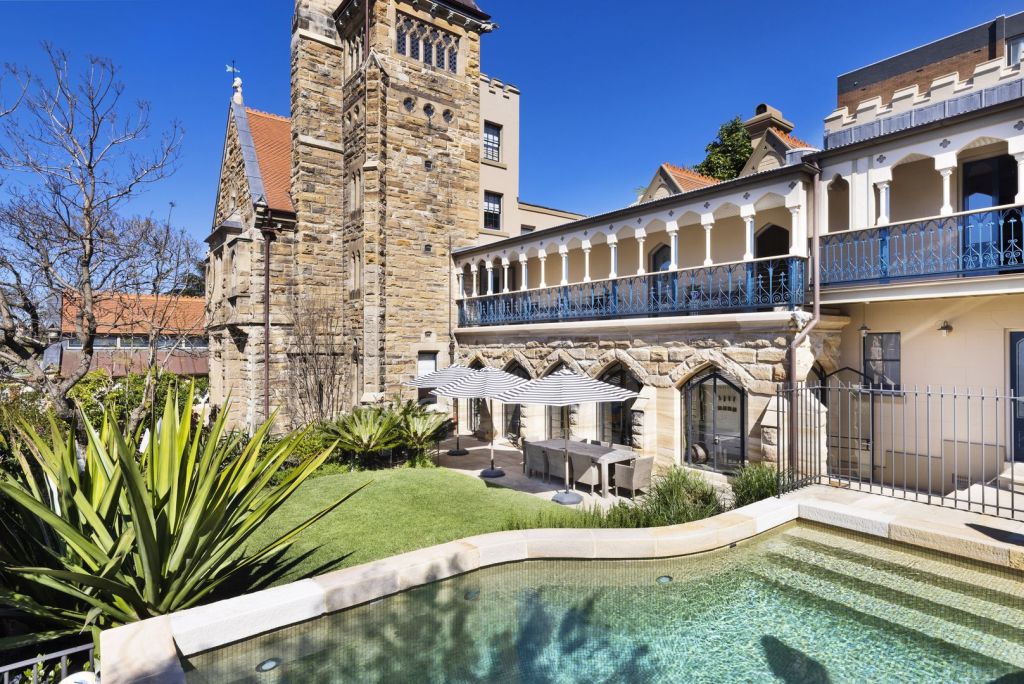
The 1300 square metre property remained in the hands of the Davis family until 2009 when it went to auction in a near-derelict state and sold before a crowd of some 200 people for $4.86 million.
“It was in a pretty frightening condition in certain parts of the place. It was derelict. Floors disintegrating, smoke damage, walls near collapse,” Mr Hogan told the Sydney Morning Herald in 2015 soon after a four-year restoration was completed, in which it was converted back into a single residence and original tessellated tiles, stained-glass windows, fireplace, original tiles and wallpaper were all repaired.
Modelled on a Scottish manor and complete with stables, guesthouse, a chapel and servants’ quarters, it returns to the market as a far more glamorous 10-bedroom residence, with a main residence that includes a music room in the former chapel, turret room, cellar and gymnasium. The cloister opens to landscaped gardens, and there is a swimming pool and separate three-bedroom dwelling in the former coach house and stables.
We recommend
We thought you might like
States
Capital Cities
Capital Cities - Rentals
Popular Areas
Allhomes
More
